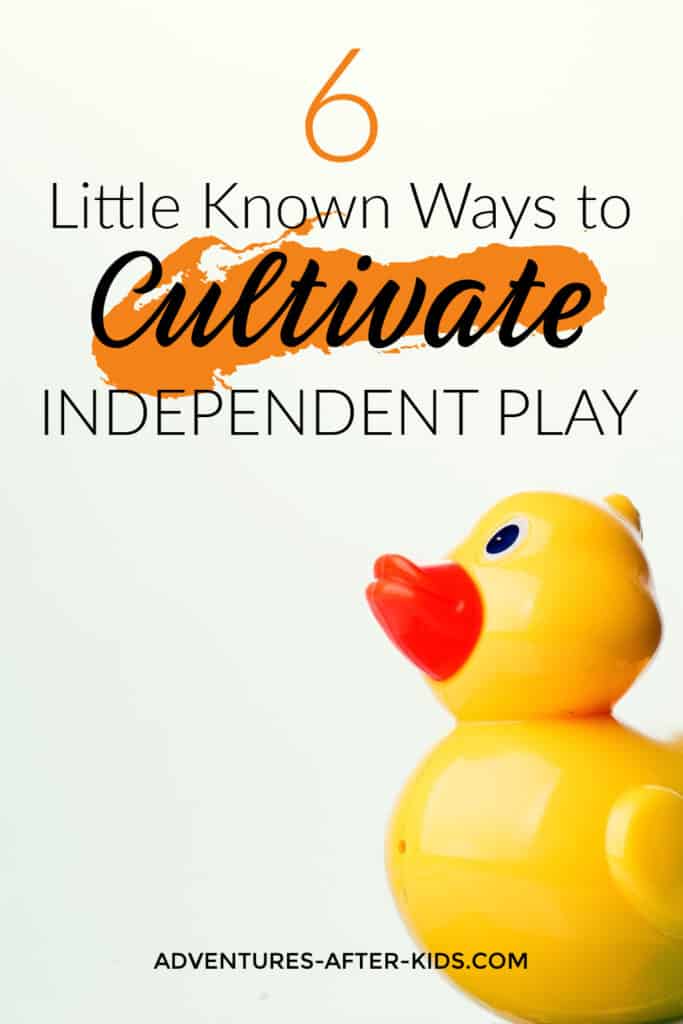6 Little Known Ways to Cultivate Independent Play
Winter
Welp folks winter is officially upon us. For many parents, this time of year can bring a sense of dread. As the weather gets colder and the days get shorter it is easy to feel at a loss of what to do with our kids. The good news is that with the right gear you and your littles can still get out and play.
But what is a parent to do when the sun goes down at 5 pm and bedtime is still a long ways away?! An easy solution would be to ramp up screen time, but what if I were to tell you that there is another way to keep your kids occupied?! That there is a tool you can use that will not only give you a break, but is good for your child’s development and overall well being?!
No, I am not talking about some mythical creature or some dark magic, I am talking about independent play!
What is Independent Play?

Independent play is more than just your child quietly playing on their own. It is the marriage of two principles:
Self-Directed Play + Intense Focus = Independent Play
Have you ever been happily doing your favorite hobby and completely lost track of time? Or been so enchanted by a book that you didn’t notice the smell of dinner burning, until the fire alarm when off (*guilty as charged*)? That is similar to what your children experience when they are immersed in independent play. Another way to think of it is as a state of deep meditation.
Benefits of Independent Play

Benefits for Mom
Being a mom is a tough job. There are no sick days, no 8-5, no holidays. It is no wonder that moms so often feel burned out. However, when you are able to cultivate independent play in your children you are naturally building breaks into your day (and saving your sanity).
Your children won’t play independently for 8 straight hours a day, but you may be surprised to find that even your wiggly two year old can play for a good 30 to 45 min at a time.
This will then give you time to do what you want to do: sleep, read, sit quietly with no one touching you, or maybe even fold laundry in peace.
Benefits for Child
Children are often over-scheduled with extracurricular activities and bombarded with electronic devices. But those aren’t true play. Why? Because the child is not able to be self-directed.
As children are allowed to explore and create they come to discover themselves (their likes and dislikes, their imagination, and their self-confidence).
Recently I had the opportunity to hear from Avital from The Parenting Junkie. She talked about additional benefits of independent play:
- Builds confidence in the child’s capacity as a learner (when a child is playing she is learning)
- Allows a child to be self-directed (great for little kids that are often directed on everything, from what to wear to when to sleep)
- Gives the child a period of time where they have autonomy and control (within looser boundaries)
- Allows the child to make decisions (this strengthens your child’s decision making abilities)
6 Ways to Cultivate Independent Play

Independent play is a beautiful and powerful thing; but like a skittish horse, if you don’t handle it with care, it will flit away.
So let’s talk about how to move from sabotaging to cultivating your child’s independent play!
Disclaimer: I am a participant in the Amazon Services LLC Associates Program, an affiliate advertising program designed to provide a means for me to earn fees by linking to Amazon.com and affiliated sites. As an Amazon Associate I earn from qualifying purchases.
Child Proof Your House

To allow for free-range exploring set up a child proof space, or better yet child proof your whole house.
Some child proofing tools we have found useful are: Cabinet Locks, Magnetic Baby Locks, and Plug Outlets. We also have a baby gate I got from a yard sale and a yardstick to keep the drawers in our kitchen closed. Everything else we want to protect is either in storage or up high/out of site.
Create a Distraction Free Environment

There are two components to a distraction free environment: screen free, and interruption free.
Screen Free:

Have you ever tried to study for an important exam with your favorite TV show on? Some of you may be superhuman, but I for one cannot concentrate. The same goes for kids. Expecting your child to reach a state of “deep meditation” with the TV blaring is not possible. The reality is the presence of a screen kills independent play.
A screen free environment does not necessarily mean that you have to get rid of your TV or your kids can never have screen time; but in order for your child to truly have independent play they need unstructured, screen free time.
This also means that when your child is playing you will want to avoid catching up on your favorite TV series or social media. You may be put out by this, but I can with confidence say that distraction free “mom time” (to lie down, read or journal) is far more refreshing than screen time.
Interruption Free:

There are three main ways in which you may be interrupting your children’s play:
#1: Directing your child’s play
Sometimes as parents/caregivers we feel like it is our job to teach our child how to play. For example, Madic was playing with a set of cars that are built like Russian nesting dolls. He wanted to push them around but my niece, who was playing with him, wanted to teach him how they nested. She kept taking the cars from him and nesting them together. He would pull the cars apart and start pushing them, just to have her take them from him again. This is all done with good intent, but the result is our children become dependent upon us to direct their play.
Unless your child seeks your help, avoid the temptation of directing your child’s play. This also means providing your children with toys and materials that are okay to be played with in a variety of ways. This goes back to the importance of baby proofing. For example, don’t leave your keyboard down where it is accessible if you aren’t okay with your child using it as a sled or pulling all the keys off.
#2: Narrating your child’s play
As moms we have good intentions and we want to help in our child’s development. This can often manifest itself by us describing everything our child is doing or seeing.
This does not mean you can’t teach your child what they are seeing or hearing. You just need to pick the right time to do it. The best time for that is when you are actively playing with your child or exploring something together. However, when your child is playing independently, zip it!
#3: Imposing your schedule on your child’s play
We live in a very fast paced world which often doesn’t leave much unstructured time for play. Whether it is running to the doctor’s office or going to school to pick up older children we are often interrupting our children’s play.
If possible, when you notice your child in a deep state of play, try to postpone transitions/interruptions. This may mean that snack time gets pushed back or you’re a few minutes late to your appointment. However, what I have found is if you are able to wait until your child resurfaces from their play, the transition goes SO MUCH BETTER (aka less tantrums – hallelujah!). When we pull our children from their play they are more likely to express frustration or sadness. Just like we are when someone interrupts our intense focus.
Set up play spaces close to where you want to be

As moms it can sometimes be frustrating to feel like our kids are under foot. This can result in us asking our children to go play outside, go play downstairs or to go play in the next room. But children, especially young children, play best when they are sharing space with their caregiver.
Think about what you would like to be able to do during your child’s play time and setup play stations near those activities. That may mean your child is playing in the kitchen while you are doing dishes or they are playing in your room while you take a nap or read.
Simplify your schedule to allow for unstructured time

Sometimes as a mom unstructured time can feel scary. But independent play cannot exist without it. If you are looking for ways to simplify your life I would highly recommend checking out the book Simplicity Parenting. The author Dr. Kim John Payne is a huge advocate for independent play and has great ideas for how to simplify your life and parenting to allow for it.
Reduce your Child’s toy quantity

When we are desperate for our children to give us a little space we can sometimes get into a frenzy of buying; in an attempt to find the perfect toy to keep them occupied. But the opposite is true. The following quote explains this concept perfectly:
“As you decrease the quantity of your child’s toys and clutter, you increase their attention and their capacity for deep play.”
Dr. Kim John Payne
One great way to do this is by setting up a toy rotation for your children.
Provide toys that allow for imagination

Ever noticed how your child plays more with the box the toy came in than the toy itself…that is because it allows for imagination. When a toy is too finished it makes it difficult for a child to imagine it as anything else. Here are some suggestions on what toys to keep or bring into your home:
- Night time toys (even if it is tattered, don’t throw away night time comfort items)
- Toys made from natural materials (wood, silk, wool, stone vs. plastic)
- Simple toys vs. fixed toys (wood blocks vs. plastic cat that lights up)
- Toys with less characteristics (cloth doll vs. highly detailed plastic doll)
Last Things You Need to Know about Independent Play
I can’t even begin to tell you how critical independent play has been for my sanity. I am a doer, so being able to get things done throughout the day has really helped me emotionally and mentally. It has also given me the opportunity to rediscover my love for reading and have some much needed down time.
If you haven’t been cultivating independent play in your children, don’t fret. No matter how old your children are it is never too late (or too early) to start. Even as an infant, tummy time is a perfect time for some independent play and exploration.
If you found this post helpful and would like to learn more, I would highly recommend checking out the book Simplicity Parenting. It seriously is my all time favorite parenting book.
What thoughts and questions do you have on independent play? Please share below!

